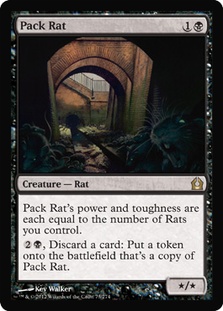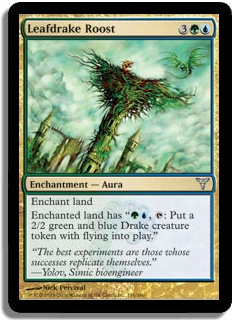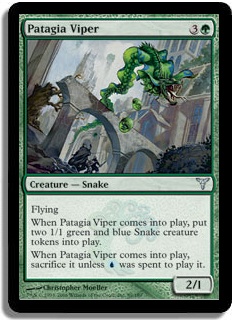I know that I am probably in the minority here, but I just can’t stand Prereleases. I know that they’re fun. I know that getting your hands on new cards is exciting and Limited formats where people don’t really know what they’re doing yet can be rewarding. You get to show off your talents in deckbuilding and maneuver around every trick and removal spell your opponent can throw at you.
And sometimes you just get ranched by an Armada Wurm.
These things happen.
I don’t like Prereleases, but that probably goes back to my earlier days of playing Magic. I would take a trip a few hours away to play in a reasonably large sized Sealed Deck event, promptly get handed a gigantic pile of garbage with no rares of value, and hate myself for two-to-four rounds while I floundered and ended up with nothing.
I can attribute much of this hatred to the fact that I am not that good at Limited and never really have been. I’ve placed second at a Limited Grand Prix and made Top 8 of a few Limited PTQs, but I regularly make mistakes in almost every Limited match I play. I can see them. I can feel them because I’m honestly not as invested. This is because not everyone starts on the same playing field, so I go into it knowing that I’m either at a disadvantage or at an advantage when it comes to Sealed.
Since Prereleases are always sealed, I hate them. When I played in them, I almost always lost “because my deck was bad,” or “I got incredibly unlucky,” or “my opponent just had a better pool.” Unfortunately, most of these reasons are probably not the reasons I lost. I built my Sealed deck incorrectly or made multiple play mistakes or mulligan mistakes that ended in my losing and getting nothing.
Long story short, I was bad at Magic, and I now associate Prerelease tournaments with losing.
I can’t really help it, but I’m trying to get over it. I didn’t really have a lot of money growing up, so spending most of it to end up with six packs of mostly worthless rares was pretty miserable, and I’ve never really gotten over it.
But drafting is a different story.
I get to see things.
Feel things.
Patterns.
And when I learn the normal patterns and begin to feel in control of how my matches go, I start to enjoy it. I really dig deep and fall in love with it. Yes, there are still rares that can blow you out, but when you draft a coherent strategy that is just better than your opponent’s strategy, the bombs don’t always matter.
One thing I have learned over the years is that although Draft and Sealed look similar on paper, they are nothing alike. If you are a better drafter than your opponents or know something they don’t about the format, it is very easy to get a leg up. In Sealed, this just isn’t the case. Everyone sorts their piles into their respective colors/guilds, finds all of their removal and bombs, and shoves them into their deck.
When you don’t have the ability to build a coherent deck due to a lack of one or more colors, mana fixing, or other reasons, it can get a little awkward. The games go longer, so the bombs matter more. If you stumble just one time, the ability of your opponent to capitalize is fairly strong due to the nature of the beast. Their deck is going to be full of their best cards regardless of how they interact with one another. You don’t have to lose to a synergistic attack. You can very easily lose to a single card.
Enter Pack Rat.
That’s a pretty fitting description of my experience with Return to Ravnica Sealed. Whenever a card beckons the following discussion, you know something is wrong:
Me: Do you think my deck would just be better if I played 39 Swamps and mulliganed for Pack Rat?
Brian Braun-Duin: Well, you can effectively mulligan to three cards on the play and still chain off. And the card is basically unbeatable. On the draw, you can even mulligan to two!
While there were certainly “some answers” to Pack Rat in Return to Ravnica Limited, they were generally too slow to handle the problem before you were able to create a copy, which resulted in more Pack Rats. Honestly, I think they could have easily fixed the card by it creating a generic */* Rat token with power/toughness equal to the number of Rats in play, but what’s done is done.
Pack Rat singlehandedly influenced results in Sealed unlike any card I have ever seen. While few people decided to run the 39 Swamp-1 Pack Rat gambit, the fact that it was possible is absurd.
In Gatecrash Sealed, there was an entirely different problem. At Grand Prix Charlotte, I was handed Sealed decks from upwards of a dozen friends of mine. I was told to “fix it” or asked what I thought about it. For the most part, the decks built themselves. There were solid rares, removal, and combat tricks. Basically everything you could want out of a Sealed pool. There was just one problem.
All the good ones were in Boros.
Every single one of my friends who had a good Boros deck ended up making Day 2. Two of them went on to 9-0 and eventually made Top 8 the tournament. Of course, they had to do a lot of drafting, but it didn’t hurt that they both ended up playing eleven rounds of Sealed before the six rounds of the Draft portion.
While the other guilds were certainly “playable,” I don’t think things were quite as balanced as they should be. The majority of the “bomb rares” were Boros, and many of the generic removal spells were either red or white. This ultimately caused a lot of tension in the format, as people didn’t really want to play Sealed without these two elements.
To boot, Boros also had the best aggressive game in town. With battalion as well as “splashing” for bloodrush, it was hard to argue against it. In that tournament, all I was rooting for was to open a solid Boros pool so that I could potentially make Day 2 and get to draft, as I was very comfortable with that format, but Simic had other plans for me. My other colors were basically unplayable, and so was Simic in the end.
For the last few weeks, I haven’t really been excited about Dragon’s Maze. The last two sets were pretty fun, but Sealed Deck has always been mediocre from my experience. Going into a Limited Grand Prix, most pros will tell you that they’re hoping to get a good Sealed pool just so that they can make it to the Draft portion. This is because there is an inherent advantage to be gained in Draft, whereas Sealed is more subject to variance.
Since I didn’t play much Sealed Deck of the last two formats, I could only assume that the Draft format for Dragon’s Maze wouldn’t be that fun either.
But man, I think I was just wrong. Flat out, absolutely, positively wrong.
Dragon’s Maze has made Returning to Ravnica all the more exciting.
For anyone who remembers old school RGD, we had a lot more to work with back then. We had Boros Garrison. We had Golgari Signet. Those two types of cards alone made the format incredibly powerful, as you had access to potent mana fixing, mana acceleration, and card advantage from lands!
But they were probably a bit too powerful. Can you imagine the current Standard format with everyone having access to colorless Farseeks? Control decks would be walking all over the place!
I think that original RGD started off the same way as the new one. I wasn’t that excited to draft RRR. You could only be one of four guilds or else your deck would be much weaker than the others.
Or so I thought. After a while, I began playing off-color guilds. Izzet splashing white ended up being my favorite thing to do. You had Galvanic Arc teaming up with Drake Familiar. On top of this, I could splash for Auratouched Mage to go get Flight of Fancy, which also comboed with Drake Familiar.
This is when I really learned that you could get a leg up on someone by keeping an open mind about drafting. While the start of the format looked bland and kind of pigeonholed you into playing certain color combinations, it wasn’t hard to just play more colors. With access to Civic Wayfinder and Farseek along with the Signets and Karoos (aka bouncelands), playing more colors was actually very easy.
And it got more complex with the release of more sets. With RRG, Guildpact really brought a lot to the table. Now drafting three-color decks was encouraged. We actually didn’t have much of an option. And again, in the beginning, I felt pigeonholed. I knew what I was supposed to do, so I did it. I started playing R/W/U the “right” way. I drafted Naya before Naya even existed. They gave us the tools to play whatever we wanted to play.
In Draft.
This was a new concept to me.
I know that I’ve been playing Magic for a very long time, but drafting Ravnica is what really opened my eyes. That was the first time I ever felt like I was in complete control of a Limited format. Every deck I built had perfect mana and was packed with awesome cards because I had perfect mana. When all the cards are good, all you need is solid mana to make everything run smoothly.
Everything I had learned from drafting RRR was given validation. It was ok to play more colors. It was actually easy.
And then came Dissension, and everything changed again.
With the design of RGD, here was the layout for guilds by set:

If you look, there were many avenues for drafting a three-color deck. You could start off Golgari, take Gruul, and then go into Rakdos to end up in Jund. You could start Boros, take Izzet, and finish with Azorius to end up R/W/U. You could take Dimir, followed by Izzet, into Rakdos to end up Grixis.
But if you notice, there is no selection of guilds for Selesnya to give you a single guild in each pack to draw powerful cards from. At some point, you will get two different guilds in a single pack to choose from, but you will also be taking significantly weaker cards from another pack because there is no “right” three-color combination for it.
While some considered this a flaw in development, I actually found it quite skill-intensive. The better players figured this out right away and avoided Selesnya like a plague. This gave people planning on playing Selesnya a huge green light. They took the risk because the reward of getting a ton of amazing Selesnya cards in the opening pack was huge. If you took the gambit and bricked because the person to your right was drafting Selesnya, then you were going to be in big trouble.
But there was a much more significant phenomenon in RGD that a few people picked up on pretty quickly, and it ultimately took them to great heights at Pro Tour Prague back in 2006. The draft colors were RUG.
Take a look at the above chart.
There is no guild in the first pack that supports RUG. However, Ravnica was the “big set” for the format and featured a robust collection of mono-colored cards that could easily be drafted. The biggest commons were:
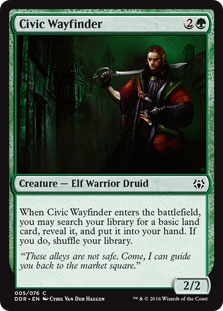
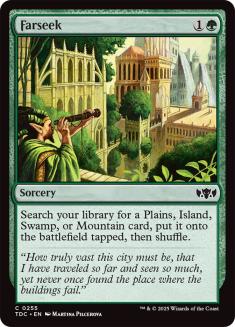
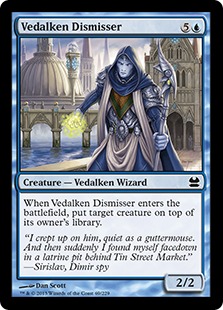
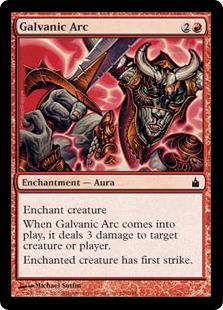
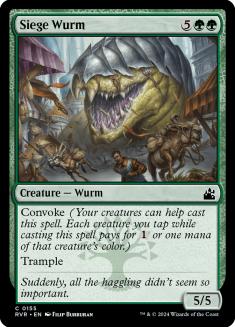
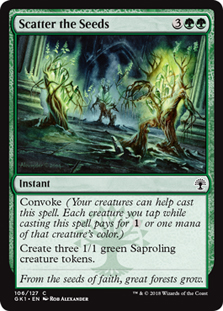
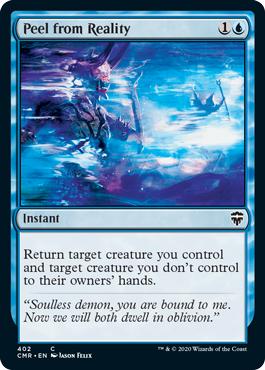
While there were plenty of other cards to be drafted, including off-color bouncelands and Signets, these were the ones you wanted to see the most. Of course, they don’t really look all that exciting, but they were all high quality commons that helped facilitate the RUG deck.
The cream of the crop came in pack 2 with Guildpact. This is where your deck was in make-or-break mode. With access to all the best cards from Izzet and Gruul, it was like you were a kid in a candy store.
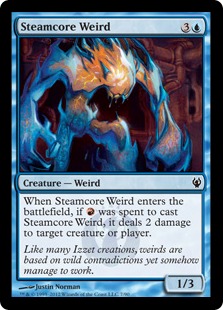
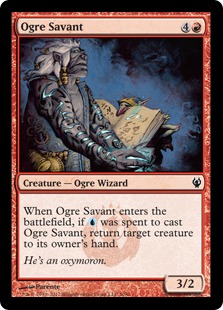
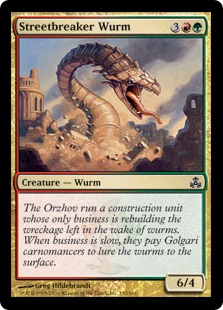
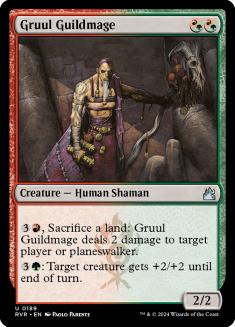
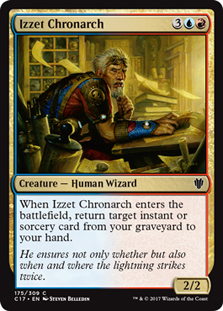
These were the cards that shaped the RUG deck. With access to cards like Farseek and Signets, it became pretty easy to assemble the combo of Izzet Chronarch and Peel from Reality. Add to this the fact that you could rebuy a ton of different awesome creatures with Peel from Reality and I was sold.
While Gruul wasn’t the best at generating a ton of minute advantages through combat tricks, it did have significantly larger creatures than every other guild. This is what you needed to close out games. Try having your opponent fight a Streetbreaker Wurm when you’re bouncing and killing all of their guys. It isn’t pretty.
But the final nail in the coffin for me was that Simic was actually in the same boat as Selesnya. You couldn’t draft a three-color deck with one guild from each set and still draft Simic. This meant that, generally speaking, Simic was incredibly underdrafted. Add to this the fact that it was full of goodies like this:
And don’t even get me started on Scatter the Seeds combined with the graft mechanic. Things just got silly.
Never have I played a format where the evolution of drafting changed so dramatically between set releases. This was it. This was the pinnacle of drafting for me. This was where I had the most fun, but really I think it was where I learned the most about Limited.
But today I learned something else. I learned that Dragon’s Maze being added to the mix of Return to Ravnica and Gatecrash changes everything.
Today, I used Electrickery to kill three creatures.
For those of you who don’t understand the significance of that statement, allow me to explain. In Return to Ravnica, I didn’t think much of Electrickery or Izzet Staticaster. They were cards. They did things. They weren’t entirely impactful on many games.
But man, just imagine having Electrickery in Gatecrash. Boros would just get wrecked, right? There are so many 2/1s and 3/1s that Electrickery would almost always be a blowout.
Well, you don’t really have to imagine it anymore.
Now that we’re drafting all three sets together, something has changed. Instead of drafting a singular guild, we are encouraged to draft more colors again. This is evident by the fact that every single pack of Dragon’s Maze has a multicolored land in it. They want us to mix guilds, find new interactions, and explore archetypes that weren’t available to us before.
We’re going to find the insane interactions that weren’t obvious before because they weren’t there before. It almost feels like I’ve been drafting for the last six months with a blindfold, but now I can finally see everything starting to come together.
We’re going to be playing Orzhov and using scavenge to make our Basilica Screechers into actual monsters. We’re going to be drafting Azorius and be entirely too aggressive with our battalion cards. I honestly can’t wait to use Armada Wurm to evolve my creatures—twice! There is so much to do and so much to learn.
We get to find new ways to use old cards, and the feeling is exaggerated because we haven’t really picked up Return to Ravnica since the release of Gatecrash. Everything is going to feel new again because of the rich interactions we’re going to see now that we’re mixing everything together!
I wish I knew more about the format so I could share more of my thoughts about it. Hopefully, that will be an article for the future. For now, I can only use the things I know in order to help prepare you for the things to come. The idea of mixing all of these sets together like one big party is just brilliant.
This is a format I can get behind. This is an idea I can get behind. This is the revelation I’ve been missing. This feels like I’m learning again.
And I’m really starting to like it.
Thanks for reading.
strong sad on Magic Online
@strong_sad on Twitter
 |
I am Golgari. Hrmm…is it dead? Yes. Well, can we salvage what’s left? Also yes. |

